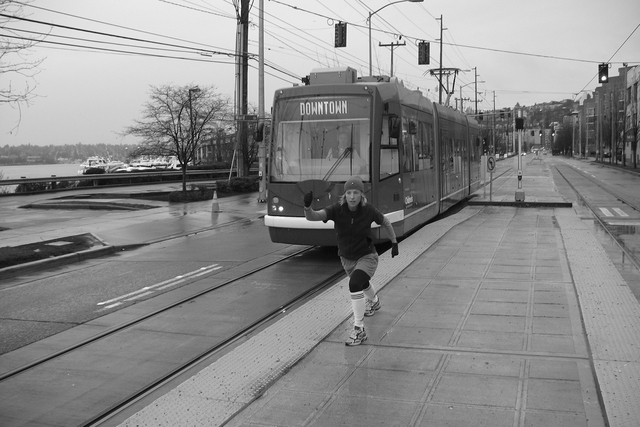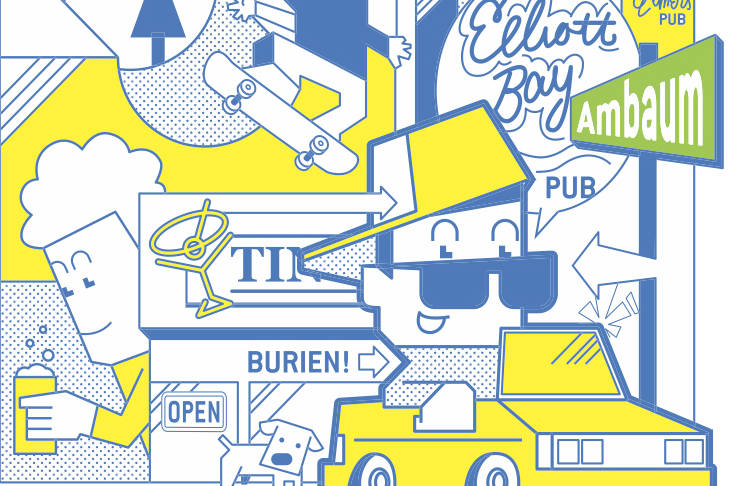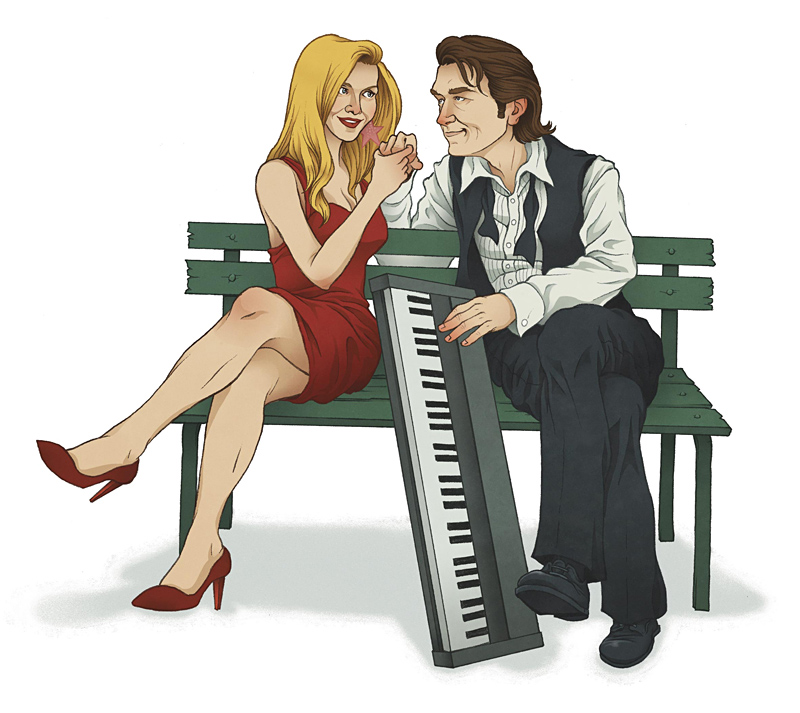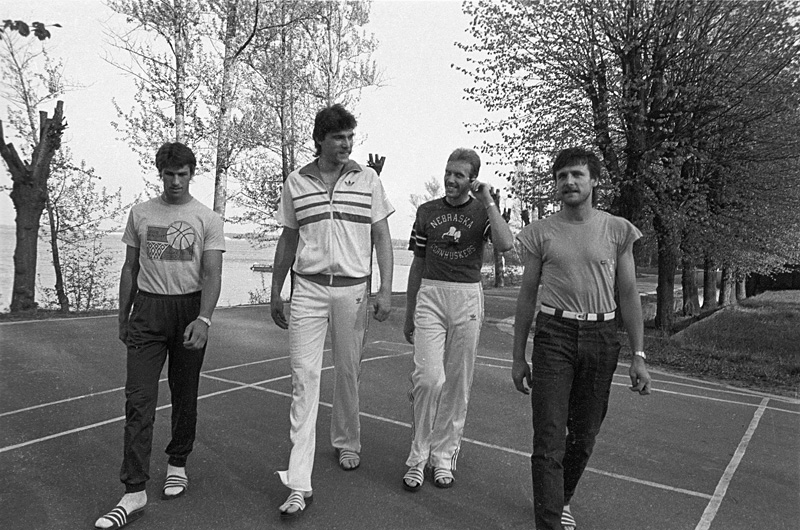Late on an October night during the 2004 presidential election cycle, I was drinking bourbon in the opulent barroom of St. Louis’ Chase Park Plaza Hotel. Pearl Jam and Death Cab for Cutie—two Seattle acts that represented the city’s unrelenting past and the ascendant present, respectively—had just played a concert at the Fabulous Fox to raise funds to bolster John Kerry’s wooden quest to unseat George W. Bush. The actor Tim Robbins and his band were also on the bill.
The revelry continued at the Chase, where Eddie Vedder, Robbins, and a small crew of acquaintances clinked glasses as last call bore down, but somehow felt a week away. At the end of the table, I got to talking about Bruce Springsteen with an old buddy from Seattle. To him, The Boss was a relic of the prior century. He’d liked him once, but had moved on. His musical palate had grown too sophisticated; he’d traded in his Cadillac for a hybrid-electric.
So it went with Seattle in the noughties. At the fore of the decade, I wrote a cover story for Seattle Weekly about how the decidedly unhip maritime village of Ballard stood on the precipice of cosmopolitan grandeur. The Bay Theater was being revamped, the Scandinavian Restaurant gave way to an Indian bistro, and something besides a greasy spoon had finally come to Market Street. But the Ballard Firehouse still hosted Jumbalassy and a pot-bellied crowd of longneck lushes most Saturdays, and The Sunset served cheap beer to scruffy drunks who didn’t mind pissing away their days on ripped vinyl.
In the mid-’90s, glass sculptor Ginny Ruffner decamped for Ballard Avenue, having moved north because “it got to the point where Belltown had too many yuppies and tourists.” Anyone who’s been to downtown Ballard on a Friday night recently will recognize how subversively prescient that statement has proven to be. Ballard showed us it could clean up well—maybe too well.
The neighborhood remains difficult to reach, however, a malady the Monorail was supposed to help eradicate. Seattleites showed city officials they weren’t joking when they voted more than once to expand the space-age train on stilts from a World’s Fair curiosity to a legitimate transit system. Traffic was bad and destined to get worse, yet the Monorail, through a toxic blend of disorganization and cynicism, would never be built.
But at least there’s a SLUT in South Lake Union, a once-industrial neighborhood that went from being Seattle’s back shop to an Amazonian playground of shiny edifices, brogrammers, and handmade gnocchi with a snifter of Fernet to wash it down. Back then, the South Lake Union Trolley was so slow, empty, and pointless that in 2007 Seattle Weekly sent a staffer, Aimee Curl, to race it on foot. She almost won. Today the SLUT is ridden by more than one person at a time.
Faring far better was Seattle’s light-rail system, an instantly indispensable set of trains built 30 years too late. God (and voters) willing, it will extend to Ballard by 2038, by which point the aborted Alaskan Way tunnel will be part of The Underground Tour.
Speaking of buried, that’s exactly what a massive (for Seattle) 2008 snowstorm did to then-mayor Greg Nickels’ political career. Seattleites have a rich tradition of blowing off work and “stranding” themselves in their kitchen with bottles of Bailey’s at snowflake’s first sight, but this was the real deal. Yet it wasn’t so much Seattle’s lack of preparation for such a powdering as it was Nickels’ self-assessment of his handling of the storm. He gave himself a “B.” The following year, voters gave him an “F,” booting him from office in the primary and leaving a pair of novices, Mike McGinn and Joe Mallahan, to duke it out for the city’s highest office.
McGinn would go on to serve just one term as mayor, his political clumsiness crippling his ability to push his ideas through a cranky City Council. But for the most part, those ideas were pretty darn good (he was dead right on Viaduct replacement, even if his campaign flip-flop was an act of political expedience at its dimmest), and the guy was so Seattle, pegging his pants to pedal his burly, bearded self down Greenwood Avenue as often as his schedule would allow. Eventually, he may go down as Seattle’s Jimmy Carter.
There are worse fates. Just ask Judy Nicastro and Heidi Wills, two bright young City Council members whose electability slid down Frank Colacurcio’s pole in the Strippergate “scandal.” In Chicago, or virtually any other major American city, an aging mobster exchanging campaign cash for a few extra strip-club parking spots would just be business as usual. In Seattle, it’s front-page news and grounds for political lynching.
Colacurcio is dead now, as is Aubrey McClendon, the Oklahoma fracking mogul who once owned a portion of the NBA’s Oklahoma City Thunder. The Thunder, as you might recall, used to be the Seattle Supersonics, which gave the city its only major professional men’s sporting title before 2013. After halting a disingenuous bid to build a new local arena to replace outmoded KeyArena, McClendon, Clay Bennett, and their cronies hijacked the Sonics and moved them to the Dust Bowl. As for Seattle, it moved on, with the Seahawks and Sounders now the toast of the town.
Last week I found myself back in KeyArena for a Springsteen show. As the ghosts of Gus and Gary lurked in the rafters, Springsteen crowd-surfed and coaxed Eddie Vedder out to sing “Bobby Jean.” In the show’s fourth hour, well after most of the graying crowd had rolled past a roadside sign which read “Caution: Hangover Ahead,” Springsteen launched into “Dancing in the Dark” with the house lights on. In the front row, a fan held up a sign wishing for a birthday dance with The Boss. That fan was a man, and Springsteen spun him around like a sock-hop cutie. Progress can be fraught, for sure, but sometimes it’s just beautiful.
Mike Seely worked for Seattle Weekly from 2006 to 2013 as a staff writer, managing editor and editor-in-chief.








